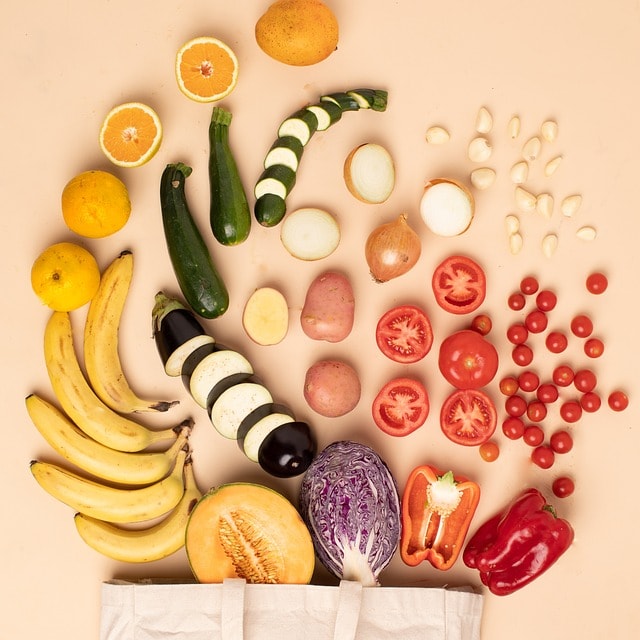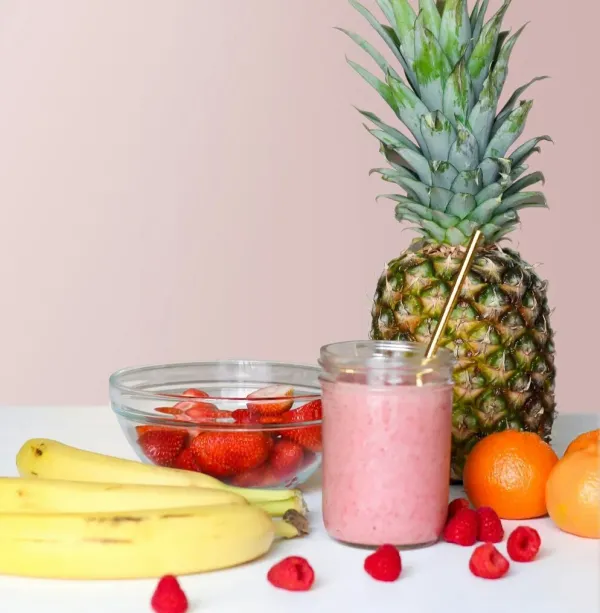Calorie Density Chart: understanding Calorie Density

Calorie density refers to the number of calories in a given volume or weight of food. Foods with high calorie density contain more calories per gram, while foods with low calorie density contain fewer calories per gram. Understanding calorie density is crucial for making informed dietary choices that can help with weight loss and maintaining a healthy lifestyle. Saturated fat from animal products contributes to high calorie density and can impact weight management.
How Do You Calculate Caloric Density?
Caloric density is determined by dividing the number of calories in a food by its weight in grams. The formula is:
Caloric Density = Calories \ Weight (grams)
For example, if a food item has 200 calories and weighs 100 grams, its caloric density is 2 calories per gram.
Calorie Density Chart
A calorie density chart is a visual tool that helps you identify foods based on their calorie density. Foods are typically categorized into groups:
• Low Calorie Density Foods: Fruits, vegetables, soups, and salads. These foods have fewer calories per gram and are high in water and fiber, helping you feel full with fewer calories.
• Medium Calorie Density Foods: Whole grains, lean proteins, and dairy products. These foods provide a moderate amount of calories and are nutritious and satisfying.
• High Calorie Density Foods: Nuts, seeds, oils, and sweets. These foods have a high number of calories per gram and should be consumed in moderation. Consuming high calorie density foods in large quantities can lead to weight gain.
Use the Calorie Chart to Apply Volume Eating
Volume eating involves consuming larger portions of low calorie density foods to feel full while consuming fewer calories. This approach helps you eat more food and feel satisfied without overeating. Incorporating plenty of vegetables, fruits, and whole grains into your meals can support this eating strategy.
Tracking Volume Eating Calories with FoodIntake App
Tracking the calories, minerals, and vitamins in your meals has never been easier with the FoodIntake app. The app’s intuitive interface allows you to quickly input the foods you consume, and its advanced AI technology automatically breaks down the nutritional content, including calorie density, vitamins, and minerals. This feature is particularly beneficial for those practicing volume eating, as it helps ensure you are not only managing your calorie intake but also meeting your essential nutrient needs. By using FoodIntake, you can effortlessly monitor your diet, make informed choices, and adjust your eating habits to achieve a balanced and healthy lifestyle. The app’s comprehensive database includes a wide variety of foods, making it simple to see the nutritional value of everything you eat at a glance.
Low Calorie Density Foods
Low calorie density foods include items like leafy greens, berries, cucumbers, and broth-based soups. These foods are nutrient-rich and provide essential vitamins and minerals without adding excessive calories. Incorporating these foods into your eating habits can significantly aid in weight loss and overall health. Hot cereals like oatmeal are also excellent options, as they are filling, high in fiber, and low in calories. Eating a pound of vegetables or fruits can help you feel full due to their high water and fiber content, allowing you to eat freely and enjoy relatively large portions without consuming too many calories.
Learn How to Add Foods That Are Nutritionally Rewarding and Satisfying
Choose foods that are both nutrient-dense and satisfying. Incorporate a variety of whole foods such as vegetables, fruits, lean proteins, and whole grains into your diet. These foods provide essential nutrients and help maintain satiety. For example, brown rice is a whole grain that offers more fiber and nutrients than white rice, making it a healthier choice that keeps you full longer. Including a mix of these nutrient-rich foods can help you create a balanced diet that supports your weight loss journey and promotes sound nutrition.

High Calorie Dense Foods
High calorie density foods, such as nuts, seeds, and oils, contain more calories per gram. While these foods are healthy in moderation, consuming them in large quantities can lead to weight gain. Foods like nut butters and dried fruit are calorie-dense but can be part of a healthy diet if eaten in controlled portions. Be mindful of the calorie density approach, which helps balance the consumption of high calorie dense foods with low calorie options to maintain or lose weight effectively. For instance, baked chips can be a healthier alternative to traditional high-calorie snacks like regular chips, helping to manage calorie intake.

What Food Has the Highest Calorie Density?
Foods like oils and fats have the highest calorie density, with oils having about 9 calories per gram. These should be used sparingly to avoid excessive calorie intake. For example, adding just a tablespoon of olive oil to a dish adds around 120 calories. While fats are necessary for a balanced diet, focusing on healthier fats and keeping track of how many calories you consume from these sources is crucial. This approach can help prevent unwanted weight gain while ensuring you get enough healthy fats, such as those found in avocados and fish, which are rich in omega-3 fatty acids.
Lose Weight Without Feeling Hungry or Deprived
By focusing on low calorie density foods, you can eat larger portions and still consume fewer calories. This approach helps you feel full and satisfied, reducing the risk of overeating and supporting weight loss efforts. This calorie density approach enables you to enjoy your meals without the constant feeling of hunger or deprivation. Incorporate foods that are high in fiber and water content, such as vegetables and intact whole grains, to maintain satiety. Remember, sustainable weight loss is a journey that involves making consistent, healthy choices.
Watch Out for Liquid Calories
Beverages can be a hidden source of calories. Drinks like sodas, juices, and alcoholic beverages can add a significant amount of calories without providing satiety. Opt for water, herbal teas, or black coffee to reduce liquid calorie intake. Many people overlook the impact of liquid calories on their diet, leading to unintentional weight gain. For instance, sugary drinks and corn syrup-laden beverages can add hundreds of empty calories to your daily intake. Choosing beverages with zero calories or those that offer nutritional benefits can help manage calorie consumption more effectively.

Fewer Calories in the Same Weight of Food
By incorporating low calorie density foods into your diet, you can consume fewer calories while still enjoying larger portions. This approach helps you feel full and satisfied, reducing the temptation to overeat and making it easier to stick to your weight loss goals. Focusing on nutrient-rich, low-calorie foods such as vegetables, fruits, and whole grains can help you maintain a healthy diet without feeling deprived. Understanding how many calories are in your foods and adjusting portion sizes accordingly can support long-term weight management.
This strategy allows you to eat more food volume while consuming fewer calories, making it a practical and sustainable way to achieve and maintain a healthy weight.
Volume Eating Cons
Balanced diet
While volume eating can be an effective strategy for weight loss by allowing you to consume larger portions of low-calorie foods, it does come with some potential downsides. One significant concern is the potential for nutrient deficiencies. Focusing primarily on low-calorie, high-volume foods like fruits and vegetables may cause you to neglect other important food groups, such as proteins and healthy fats, which are essential for a balanced diet. Additionally, volume eating can sometimes lead to gastrointestinal discomfort, such as bloating or gas, due to the high fiber content in many low-calorie foods.
Time consuming
Another downside is that it can be time-consuming and inconvenient to prepare large quantities of fresh produce, making it challenging for those with busy schedules. Lastly, volume eating requires careful planning and education to ensure that meals are still nutritionally balanced, which can be overwhelming for some individuals. This approach might also not be sustainable in the long term if it feels too restrictive or monotonous, leading to a potential relapse into less healthy eating habits.
Final Words
Make Time for Exercise
Incorporating regular exercise into your routine is crucial for effective weight management and overall health. Exercise complements volume eating by boosting your metabolism, building muscle, and enhancing your overall fitness. Aim for a mix of cardio, strength training, and flexibility exercises to keep your body active and strong.

Meal Plan
Planning your meals can help you stay on track with your dietary goals. Create a weekly meal plan that includes a variety of nutrient-dense foods to ensure balanced nutrition. Meal prepping can save time and reduce the temptation to opt for unhealthy, high-calorie snacks and meals.
Volume Eating for Weight Loss
Volume eating, when implemented correctly, can be an effective strategy for weight loss, allowing you to enjoy larger portions of food without consuming excessive calories. This approach promotes the consumption of nutrient-dense, low-calorie foods like fruits, vegetables, and whole grains, which can help you feel full and satisfied while supporting your weight loss journey.
Balanced Diet for Nutritional Needs
However, it is essential to balance this approach with a varied diet that includes adequate proteins and healthy fats to ensure all your nutritional needs are met. Focusing solely on low-calorie foods might lead to nutrient deficiencies, which can be detrimental to your health.
Drawbacks of Volume Eating
While the concept of volume eating has its advantages, it’s not without its potential drawbacks. Nutrient deficiencies, gastrointestinal discomfort, and the time required to prepare large quantities of fresh produce are some of the cons that need to be managed carefully. It’s important to plan your meals thoughtfully and consider consulting with a registered dietitian to ensure your diet remains balanced and sustainable.
Benefits of Calorie Density Understanding
By understanding the principles of calorie density and incorporating them into your daily eating habits, you can make informed dietary choices that support long-term health and weight management. Whether you’re aiming to lose weight or simply maintain a healthy lifestyle, focusing on nutrient-rich foods and mindful eating practices can help you achieve your goals without feeling deprived.
Finding a Balanced Approach
Ultimately, the key to successful weight management lies in finding a balanced approach that works for you. Embrace the benefits of volume eating while being mindful of its limitations, and you’ll be well on your way to a healthier, happier you.
FAQ: What is the Calorie Density Chart?
A calorie density chart is a tool that categorizes foods based on weight depending on their caloric density, helping individuals make informed dietary choices to manage calorie intake and support weight loss.
FAQ: How Do You Calculate Caloric Density?
Caloric density is calculated by dividing the number of calories by the weight of the food in grams. This helps determine how calorie-dense a food is, aiding in better dietary planning.
FAQ: What Substance Has the Highest Calorie Density?
Oils and fats have the highest calorie density, with approximately 9 calories per gram of fat. These should be used in moderation to avoid high calorie intake.
FAQ: What is the Calorie Density of an Egg?
An egg has a moderate calorie density, with approximately 1.5 calories per gram. A large egg typically contains about 70-80 calories.









